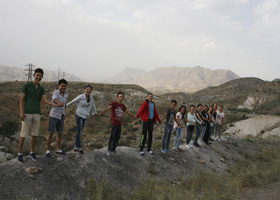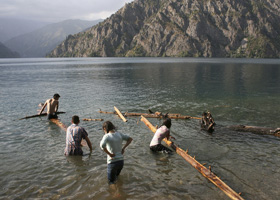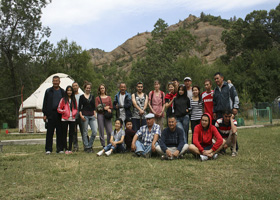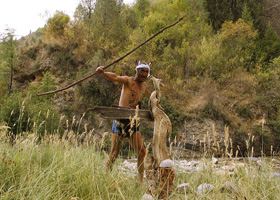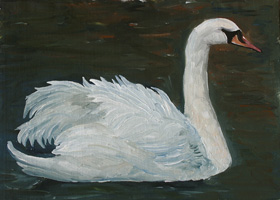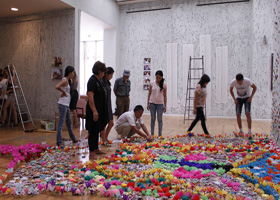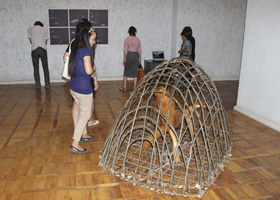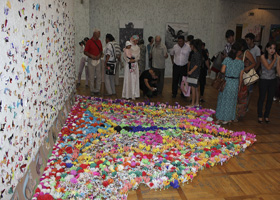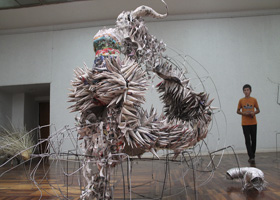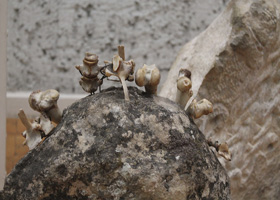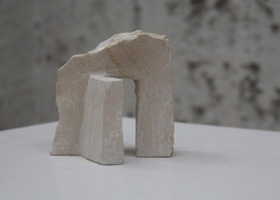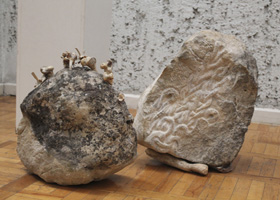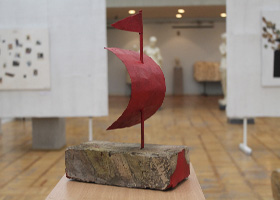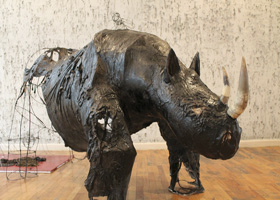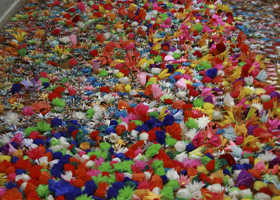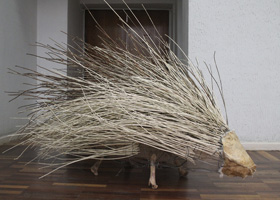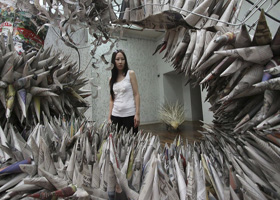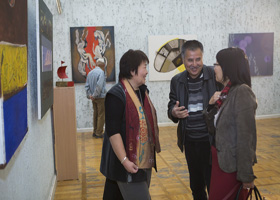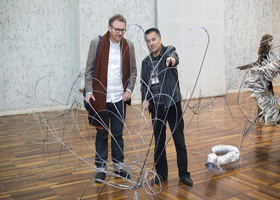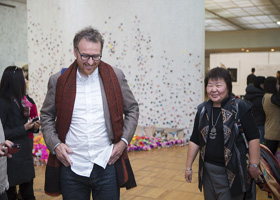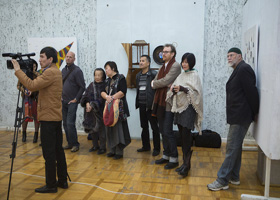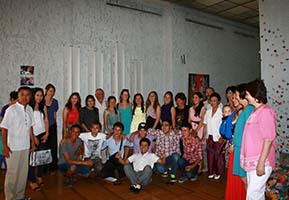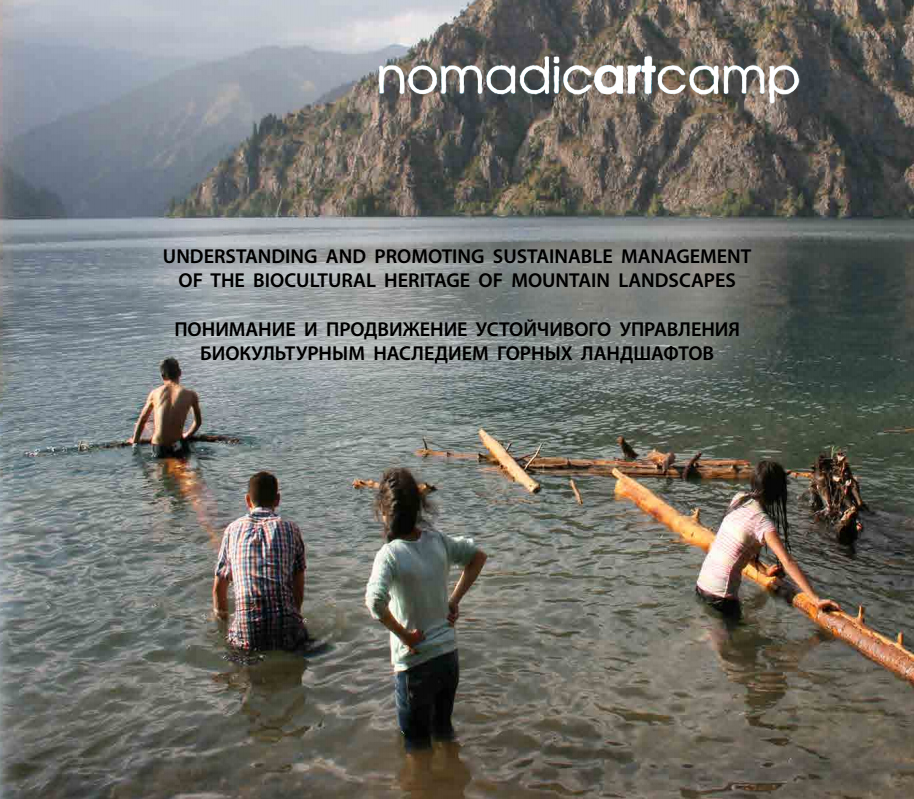2014 NOMADIC ART CAMP
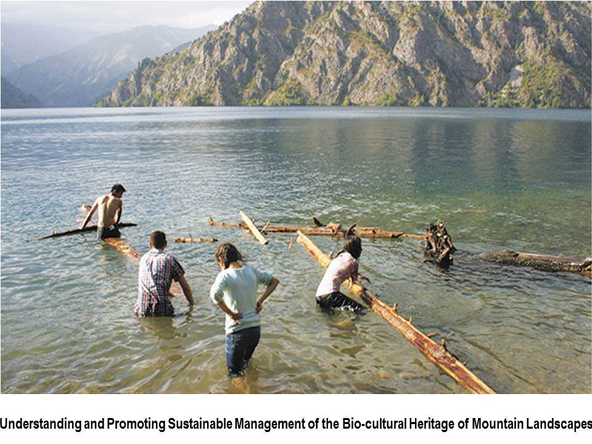
Nomadic Art Camp 2014: Understanding and Promoting Sustainable Management of the Biocultural Heritage of Mountain Landscapes
The 2014 project, held on the shores of Sary-Chelek Mountain Lake in the Jalal-Abad region of southern Kyrgyzstan, was not just a cultural initiative but a profound philosophical exploration that addressed some of the most pressing global challenges of our time. Situated in a location of stunning natural beauty, the project created a reflective space for both artists and audiences to engage with the environmental and cultural crises our planet faces. The initiative sought to raise awareness of the interconnectedness of nature, biodiversity, and cultural heritage. It provoked a deeper understanding of humanity’s responsibility for the future of Earth. At its core was the interaction between humans and nature, which has entered a crisis phase in recent decades. With global environmental threats such as pollution, species extinction, poaching, and the destruction of natural landscapes, the project used art as a powerful tool for reflection, urging society to reconsider its relationship with the natural world. The artworks produced during the camp explored the concept of identity, intertwined with an understanding that nature is not merely an external environment but an inseparable part of human existence. The central theme of the Nomadic Art Camp 2014 was the preservation of biocultural diversity, a concept that holds profound ecological and cultural significance for Kyrgyzstan and the world. The destruction of ecosystems not only threatens biological diversity but also erodes the traditional knowledge, practices, and cultural identities of local communities that have lived in harmony with their environment for generations. The loss of a natural landscape represents not just the disappearance of flora and fauna, but the obliteration of worldviews and practices that sustain communities. Sustainable management of biocultural heritage in mountainous regions requires a balanced approach, one that recognizes the essential interdependence of nature and culture. Protecting biodiversity, promoting the sustainable use of resources, supporting local communities, and fostering global awareness of these landscapes' value are all critical components of this approach. By integrating traditional knowledge with modern conservation practices, the project aimed to ensure that these mountain landscapes would continue to thrive ecologically and culturally for future generations. The project also addressed important socio-cultural issues such as gender and social relations, which are deeply impacted by ecological and economic changes. The destruction of nature is intrinsically linked to the disintegration of social structures, a theme that was evident in the artworks exhibited at the culmination of the project. These works were not only a protest against ecological threats but also an attempt to create new perspectives—an effort to reimagine the world and its future. The artworks served as a complex expression of both pain and hope, offering a call to action in response to the environmental challenges we face. The exhibition, From the Past to the Future, held at the Kyrgyz National Museum of Fine Arts in Bishkek, marked the culmination of the project. The show was more than just a display of the artists' works—it was a platform for deep engagement with pressing environmental and cultural issues. It aimed to raise awareness among the public, especially youth and various subcultures, about the fragility of cultural and ecological heritage and the need to protect both. The exhibition was not merely an aesthetic experience but a call to action, urging viewers to consider the legacy they will leave for future generations. The 2014 camp stands out as a critical intervention in the current global reality. It challenged conventional notions of art, transforming it into a means of social and environmental critique. Through this initiative, the project sought to strengthen the connection between people and nature, emphasizing that every action, no matter how small, has consequences. It is vital for future generations to understand their role in preserving both the natural world and the cultural practices that sustain it. In today’s rapidly changing world, we stand at a crossroads. The environmental crises we face, combined with the loss of biocultural diversity and the need for sustainable development, demand comprehensive solutions. Art, through projects like the 2014 initiative, has become an essential tool for cultural and social transformation, playing a central role in the global movement toward a more sustainable future. By using art to explore complex ecological and cultural issues, we can inspire action and raise awareness about the urgent need to protect both nature and culture.
Artistic Direction and Curatorial Leadership: Shaarbek Amankul
